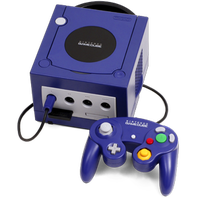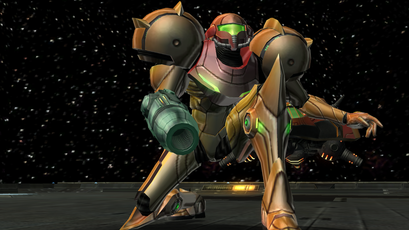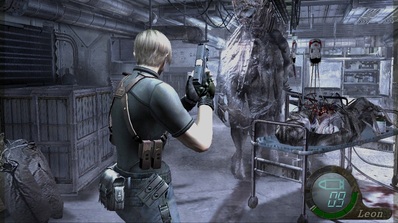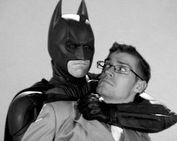
“Genesis does what Nintendon’t” was the slogan used to market the Sega Genesis back in the late eighties and early nineties against its fiercest rival, the Super Nintendo. Cute, I think you’ll agree. But as it turned out, what Sega did that Nintendidn’t… was perish. In actual fact, Nintendo did what they continue to do, they adapted and they survived. Indeed, the Nintendo-Sega console war of the eighties and nineties was a real knock-down, drag-out, slobber-knocker of a showdown, but when the dust had cleared and all was said and done, it was Nintendo who were left standing tall.

Thank you.
The year is 2001. By now, Sega are pretty much dead in the water (no doubt with that pulse quickening, panic inducing music that plays whenever Sonic is drowning – you know the one - ringing in their ears all the while) following the discontinuation of the Dreamcast.
But not to worry, for two new fresh and hungry challengers have by now arrived on the scene, both equally as eager to knock Nintendo off its Triforce-patterned, mushroom-shaped throne. The first – Sony – has already made waves with its impressive debut, the PlayStation, and now promises to blow the whole gaming world away with its follow up, the PlayStation 2. The second –Microsoft – has just burst onto the scene with its own radical new Xbox console. And Nintendo…. Well, Nintendo has the GameCube. The GameCube may well be the most overlooked of all Nintendo’s consoles and was undoubtedly the underdog of the sixth generation console war. It’s not that it wasn’t a good console, because it was. It was host to a number of bonafide classics, including: The Legend of Zelda: The Wind Waker, Luigi’s Mansion, Mario Kart: Double Dash!!, Super Mario Sunshine, the Metroid Prime Trilogy and Resident Evil 4 (originally a GameCube exclusive).
It’s not that it didn’t sell well either, because it did – a respectable 22 million units in all. And in fact, the GameCube was actually quite a revolutionary console for Nintendo. For one thing, it was the first Nintendo console to support online gaming, albeit in a limited fashion with the use of a special Broadband or Modem adapter. It was also the first Nintendo console to have a fully functioning and reliable wireless controller in the form of the innovative Wave-Bird. The Gamecube was also Nintendo's first console to use optical discs as its primary storage medium. And on top of all that, it could also be connected up to various Game Boy handheld consoles to allow for, what was at the time, a unique double-screened gaming experience.

Yet, despite all this, still its legacy as the ‘forgotten console’ of the sixth generation seems to endure. The reasons for this may be simple. The PlayStation 2 was simply unparalleled in popularity and is still the highest selling video game console of all time, so Nintendo’s hands were pretty much tied there, whereas the Xbox was Microsoft’s first foray into the video game console market and as such garnered much warranted attention. When taking these two variables into consideration, it becomes easier to see how the GameCube could have gotten lost in the shuffle. It was a new age and maybe Nintendo were seen by some as a limping, war torn, battle scarred veteran of console wars from a by-gone era. This was the age of Sony. Of Microsoft. And soon Nintendo would surely go the way of its longtime nemesis, Sega.
But, I refer you back to the start of this article. Just like in the old days with Sega, even despite having seemingly been knocked off their throne once and for all, even despite going from undisputed top dog to being viewed as third rate in just a few short years, Nintendo went away, regrouped, and came back swinging (quite literally). With the launch of the more family-orientated Wii in November 2006, Nintendo bounced back by attempting to be different as opposed to better than its competition, a strategy that proved to be immensely successful with the Wii exceeding both the PS3 and Xbox 360 in overall sales.
So then, back to the GameCube. That forgotten, dust encrusted gem of the sixth generation. In hindsight, the GameCube can be seen as the end of an era for Nintendo before their switch to a new (and financially justified) direction, and as such can perhaps be seen as the ultimate realization of the vision they began with the NES back in 1983. From 8-bit through to 485 MHz, the GameCube represents the pinnacle of that evolution, and as such became the starting point for a new vision for Nintendo moving forward with the Wii and its successors.

 RSS Feed
RSS Feed
